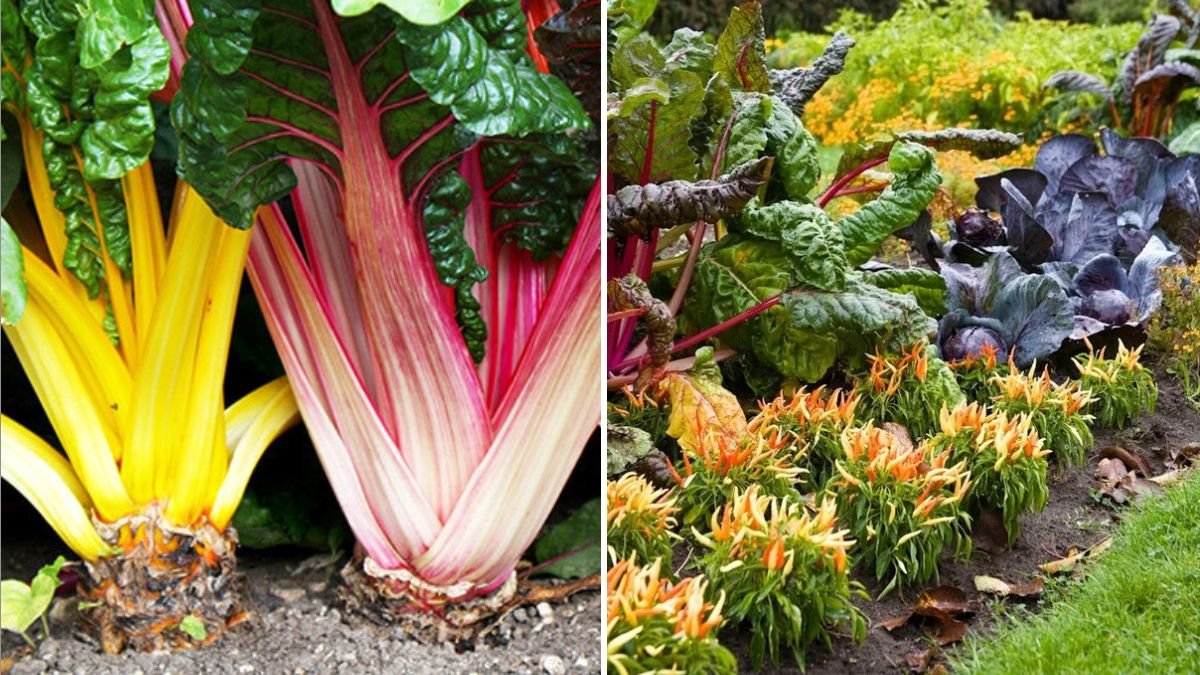When most people think of edible gardens, they picture neat rows of vegetables or large backyard plots dedicated to crops. While traditional gardens have their place, they aren’t always the most practical—or the most beautiful—solution for modern homes. The good news? You don’t need a separate vegetable patch to grow your own food. By blending edible plants into your existing landscape design, you can create a garden that’s not only attractive but also productive.
Edible landscaping, sometimes called “foodscaping,” combines the aesthetic appeal of ornamental plants with the functionality of food-producing ones. Imagine borders filled with blueberry bushes instead of boxwood, or a pergola draped with grapevines instead of just flowering clematis. With a little planning, your landscape can feed both your eyes and your table.
Here’s a detailed guide on how to integrate edible plants seamlessly into your outdoor design.
Why Choose Edible Landscaping?
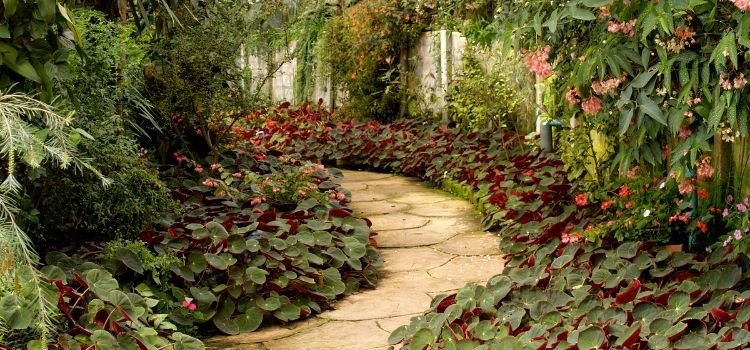
Blending edibles into your landscape offers multiple benefits beyond just homegrown produce:
- Beauty and function: Many fruits, herbs, and vegetables are as ornamental as they are useful.
- Space efficiency: Perfect for small yards where a traditional vegetable patch isn’t practical.
- Biodiversity: Attracts pollinators, beneficial insects, and birds.
- Sustainability: Reduces food miles and encourages healthier eating.
- Seasonal interest: Edibles often provide flowers, fruit, and foliage that evolve throughout the year.
Step 1: Rethink the Roles of Plants
When designing a landscape, each plant has a role: ground cover, border, hedge, focal point, climber, or shade provider. Instead of filling these roles with purely ornamental plants, consider their edible counterparts:
- Ground cover: Replace ivy or vinca with creeping thyme, oregano, or alpine strawberries.
- Borders and edging: Use chives, parsley, or dwarf kale for colorful, edible edges.
- Hedges: Swap boxwood for blueberry shrubs or rosemary hedges.
- Climbers: Instead of wisteria, try grapevines, passionfruit, or hardy kiwi.
- Focal trees: Plant apple, cherry, or persimmon trees in place of non-fruiting ornamentals.
Step 2: Choose Attractive Edible Plants
Not all edibles are showstoppers, but many can rival ornamental plants in looks. Some top choices include:
- Fruiting shrubs: Blueberries (brilliant fall foliage), currants, serviceberries.
- Herbs: Lavender (fragrant purple flowers), basil (lush green or purple leaves), sage (velvety foliage).
- Vegetables: Swiss chard (colorful stems), ornamental kale, lettuce varieties with red and green tones.
- Trees: Pomegranate (bright flowers and jewel-like fruit), figs, citrus in warmer climates.
- Vines: Grapes, scarlet runner beans (edible beans and red flowers), hops.
By selecting varieties with ornamental appeal, you’ll get the best of both worlds.
Step 3: Design for Year-Round Interest
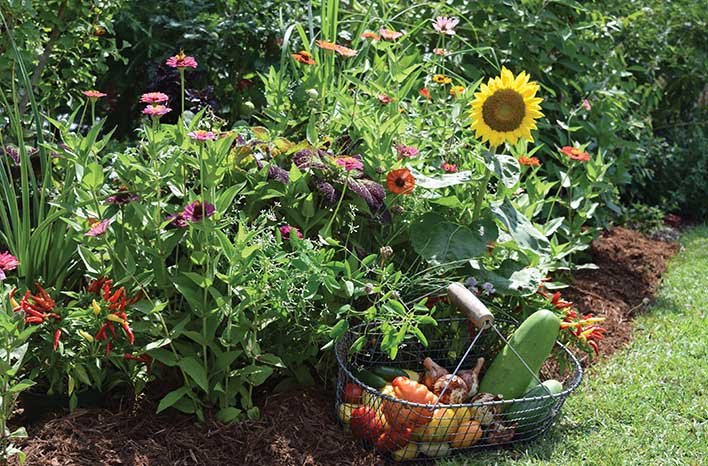
A successful landscape offers beauty in all seasons. Edible plants can do the same if chosen carefully:
- Spring: Apple blossoms, chive flowers, strawberry blooms.
- Summer: Tomatoes, peppers, lavender, lush basil.
- Fall: Pumpkins, squash, vibrant blueberry foliage.
- Winter: Evergreen rosemary, kale, and the sculptural branches of fruit trees.
Mix plants so that something edible (and beautiful) is always shining in your garden.
Step 4: Layer Plants Like an Ornamental Garden
Great landscapes often use a layered approach—tall trees, mid-level shrubs, perennials, and ground covers. Apply the same strategy with edibles:
- Canopy: Fruit trees (apple, pear, persimmon).
- Shrubs: Blueberries, raspberries, currants.
- Perennials: Rhubarb, asparagus, globe artichokes.
- Ground covers: Creeping thyme, strawberries, oregano.
- Climbers: Grapevines, beans, cucumbers on trellises.
This not only maximizes food production but also mimics the natural look of layered ornamental gardens.
Step 5: Integrate Edibles Into Existing Features
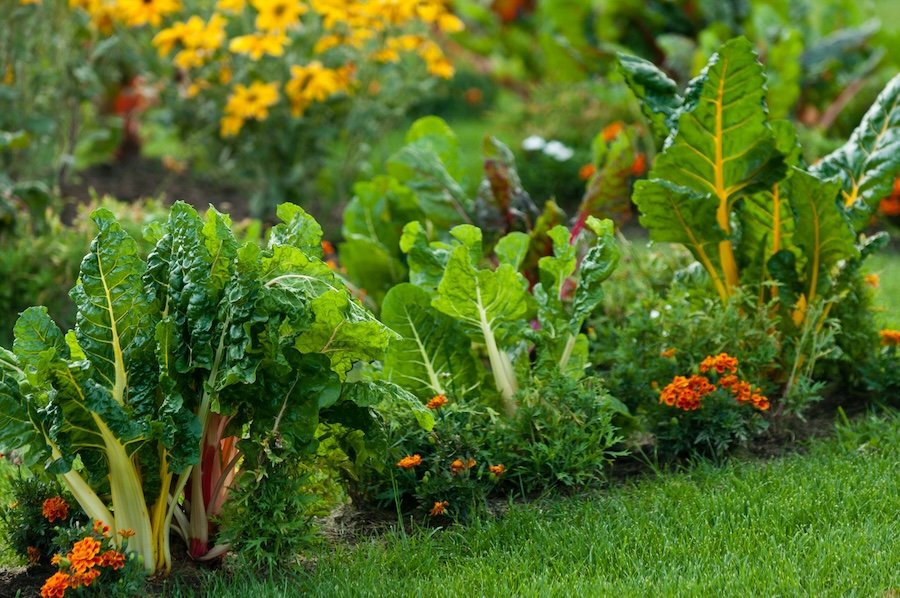
You don’t need to redesign your entire yard—simply weave edibles into what’s already there:
- Flower beds: Mix colorful lettuces, chard, or herbs among ornamentals.
- Borders: Plant rosemary, lavender, or sage along walkways.
- Pergolas and trellises: Grow grapes, beans, or kiwis instead of purely ornamental vines.
- Patios: Use container gardens with herbs, peppers, or dwarf fruit trees for functional beauty.
- Hedges and privacy screens: Replace ornamental hedges with dense raspberry bushes or espaliered apple trees.
Step 6: Consider Practical Needs
While edible landscaping is beautiful, it should also be functional and manageable:
- Sunlight: Most edibles require 6–8 hours of full sun daily. Place fruiting plants accordingly.
- Watering: Group plants with similar water needs together. Herbs prefer drier soil, while leafy greens like consistent moisture.
- Soil: Ensure healthy, well-draining soil. Consider raised beds or amended soil in poor areas.
- Harvesting access: Place frequently used plants (like herbs) close to your kitchen or patio.
Step 7: Balance Ornamentals and Edibles
You don’t have to go 100% edible—mixing ornamentals keeps your design flexible. For example:
- Pair ornamental grasses with chard for contrast.
- Use sunflowers among tomatoes for height and beauty.
- Mix zinnias or marigolds with peppers for vibrant beds.
This blend ensures your garden looks lush while still providing plenty of harvest.
Step 8: Plan for Pollinators and Wildlife
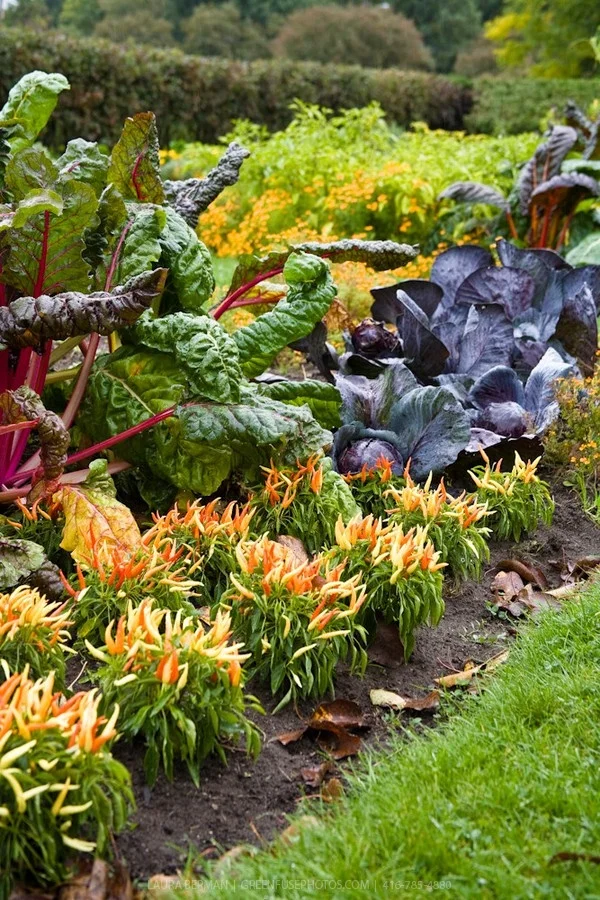
Many edible plants produce flowers that attract bees, butterflies, and beneficial insects. To maximize these benefits:
- Plant herbs like thyme, oregano, and mint near vegetables.
- Use flowering fruit trees to kickstart pollinator activity in spring.
- Add native flowering plants alongside edibles for ecological balance.
Birds will also enjoy berries and seeds, so be ready to share—or use netting if you want more for yourself.
Step 9: Start Small and Expand
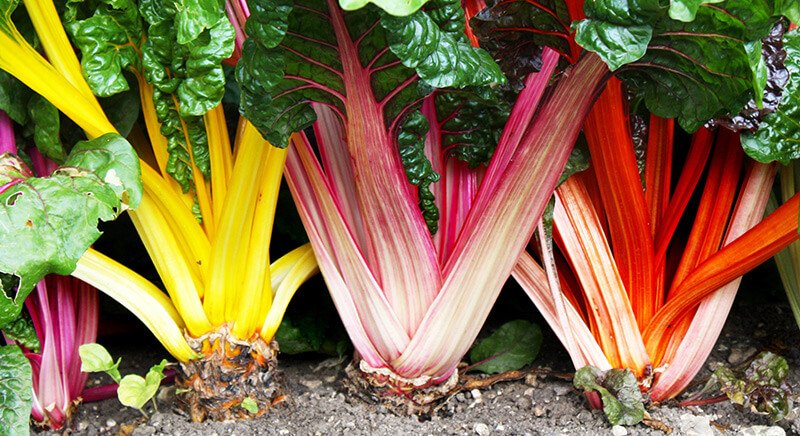
If you’re new to edible landscaping, begin with just a few easy swaps—maybe a blueberry bush in place of a shrub, or thyme instead of groundcover. Once you see how seamlessly they blend in, you can expand further with trees, vines, and layered plantings.
Final Thoughts
Blending edible plants into your landscape design is more than just a gardening trend—it’s a smart, sustainable way to create a yard that nourishes both body and soul. With careful planning, you can design a space that’s lush, inviting, and bountiful. From herb-edged pathways to fruit-bearing hedges and vegetable-studded borders, the possibilities are endless.
By reimagining your landscape as both beautiful and edible, you’ll enjoy the satisfaction of harvesting fresh produce while living in a garden that looks like a work of art. Edible landscaping proves that beauty and practicality can thrive side by side—turning your outdoor space into a feast for the eyes and the table.
